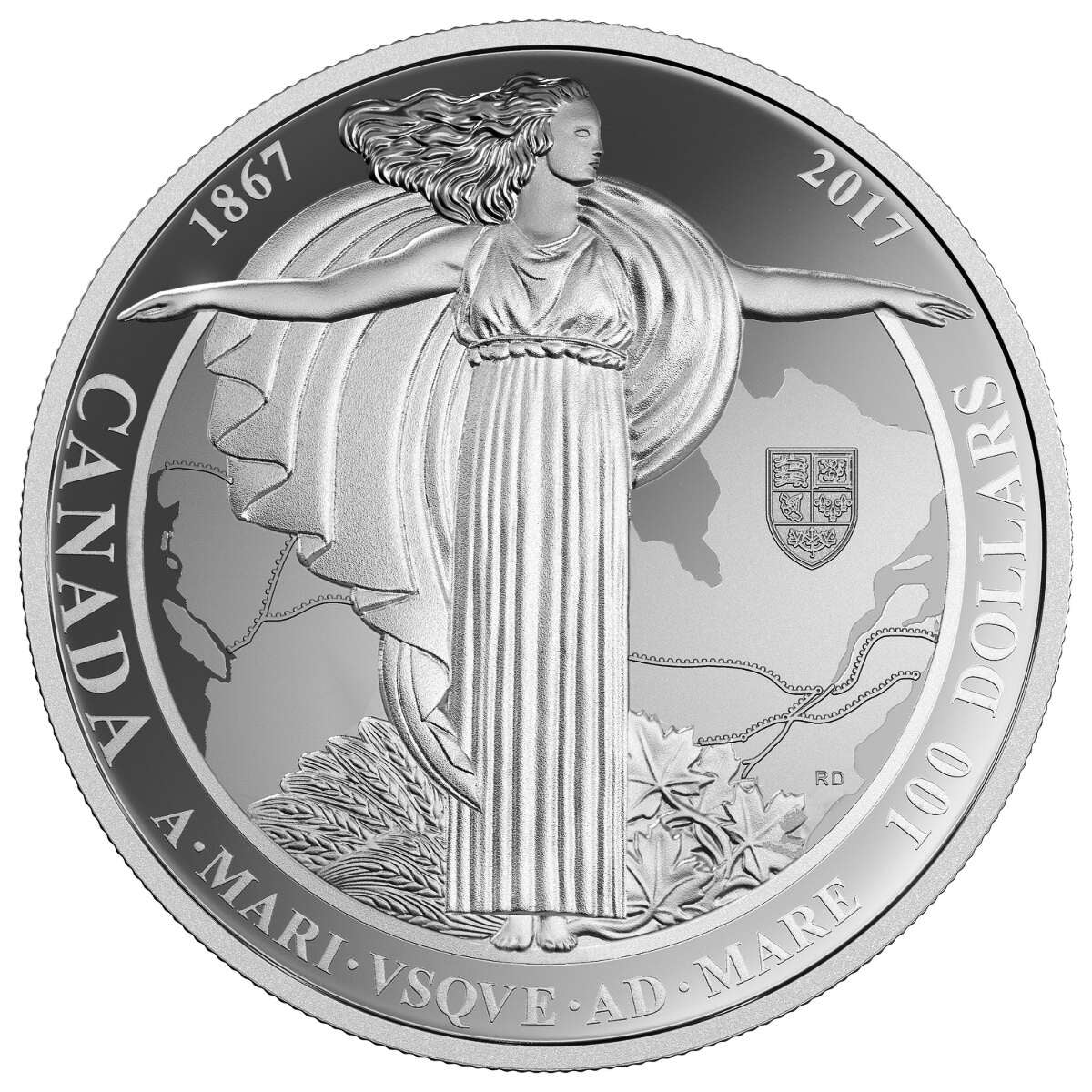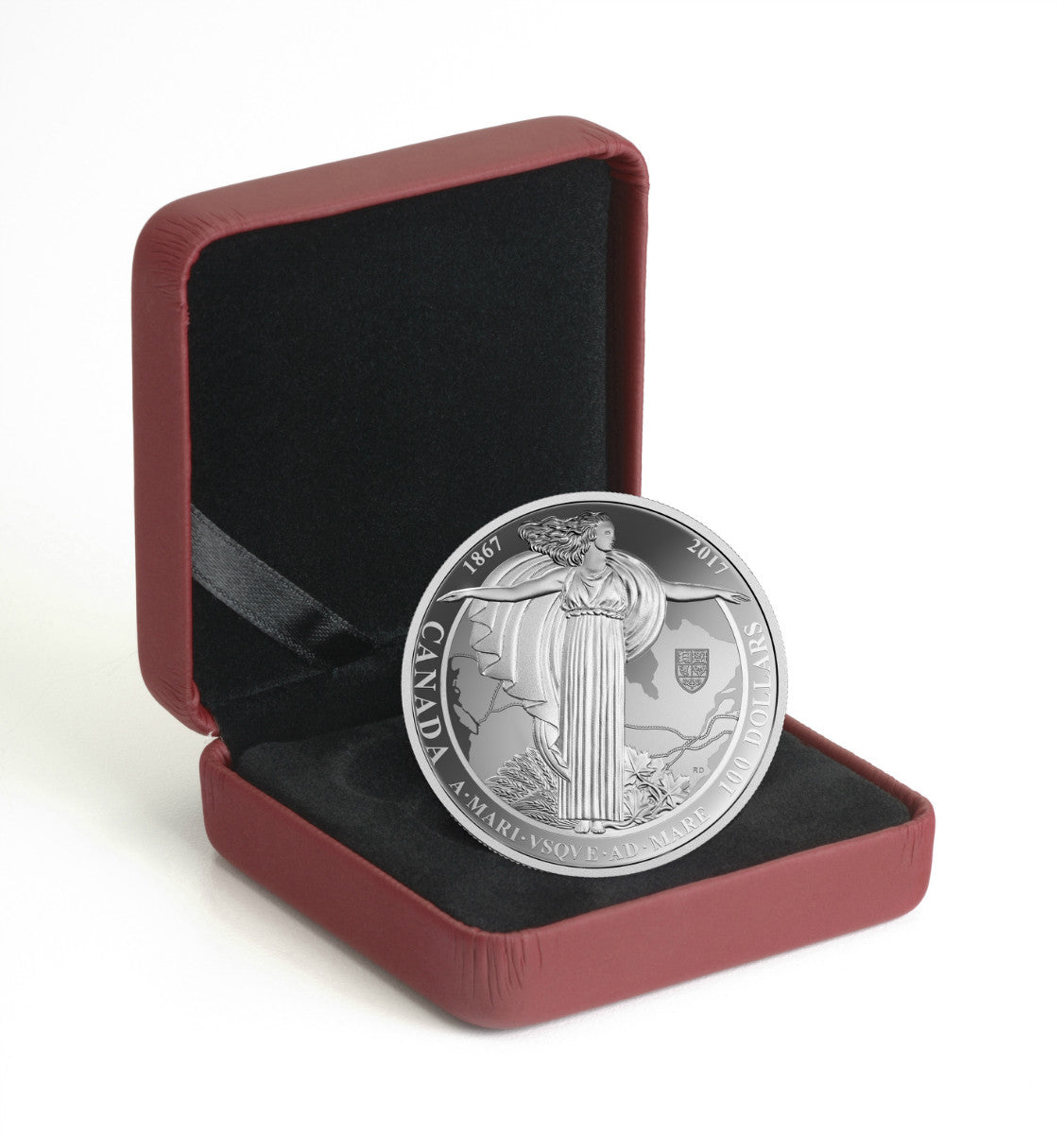Description
This ‘Canada 150’ Commemorative $100, TEN OUNCE coin combines important Canadian history, spectacular high relief art, a double effigy of Queen Elizabeth and Queen Victoria, with an extremely low mintage of just 1,000 coins. HST/GST exempt.
As Canada reached its milestone 60th Anniversary of Confederation in 1927, the precedent first set in 1867 was followed to create a new large format allegorical commemorative medal. In celebration of ‘Canada 150’, this design has been brought back to life in a new ten ounce fine silver $100 coin. The design was first created by Canadian illustrator Charles William Jefferys (1869-1951), and was engraved by the illustrious French medallist, Raymond Delamarre (1890-1986) of the Paris Mint.
The Design:
The 1927 medal design provides an allegorical representation of the growth, development and early transformation of Canada. In place of the four eager young maidens which represented the founding provinces of Canada on the 1867 medal, a new single “Canada” figure on the 1927 medal has gained maturity and confidence, and represents the unified country. Her arms are spread wide, echoing Canada’s official motto which appears across the medal Ad Mari Usque Ad Mare (“From sea to sea”). Below the allegorical figure are sheaves of wheat and clusters of maple leaves. Behind her, a map of the country
includes the transcontinental rail links and the shield from the Royal Arms of Canada. The names of four prominent explorers are also included: (Captain James) Cook, (Captain George) Vancouver are inscribed along the West coast, while (Jacques) Cartier and (Samuel de) Champlain are inscribed on the East side of the map. ‘Canada’ stands proudly on a pedestal marked 1867-1927.
The obverse design features a double effigy of Queen Victoria (the monarch at the time of confederation in 1867) and Queen Elizabeth II (the monarch at the time of Canada 150).





